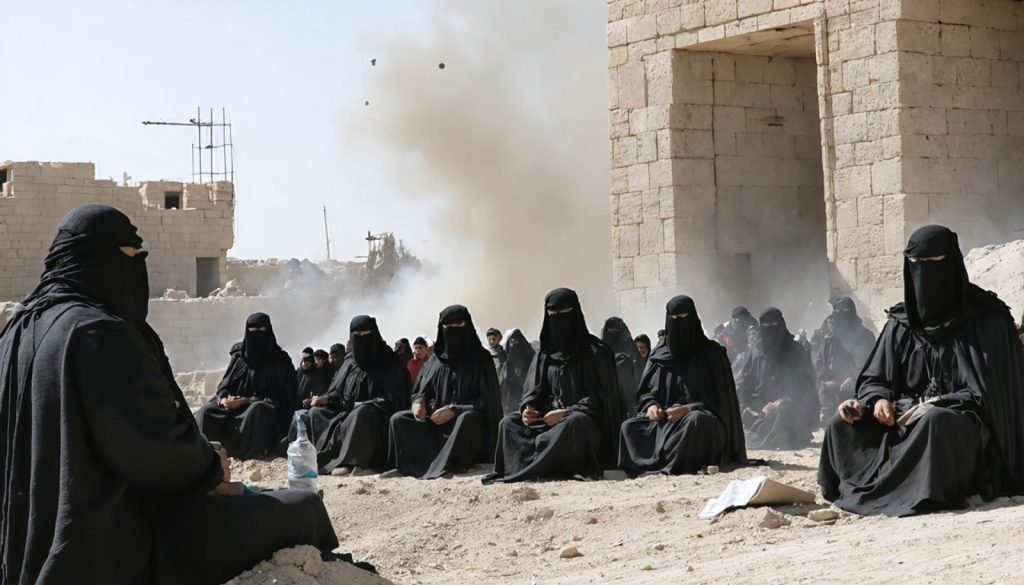
- Syrian law is a complex blend of Ottoman, French, and Islamic influences, requiring careful interpretation by legal experts.
- The nation’s courts tackle significant societal issues, such as land ownership disputes, amidst ongoing conflict and reconstruction.
- Judges balance ancient traditions with modern codes, especially in areas like family law where Sharia and secular legislation intersect.
- The legal system serves as a resilient institution, ensuring laws remain relevant and serve the present and future needs of society.
- Syrian courts exemplify the transformative power of law, casting statutes into resolutions that uphold justice and human dignity.
Nestled within the crossroads of history, Syria’s legal landscape tells a story of resilience and complexity. In the shadow of ongoing conflict and cultural shifts, the nation’s courts face the Herculean task of interpreting a mosaic of laws that blend modern codes with rich historical traditions. Imagine a tapestry with threads frayed yet remarkably intact, where each strand represents varying legal principles that must be harmonized to deliver justice.
Syrian Law’s Diverse Roots
Syrian law, a remnant of Ottoman, French, and Islamic influences, presents a formidable challenge for legal experts and judges who must decide on matters with profound societal impact. One can picture a courtroom where the air is thick with anticipation as the venerable judge sifts through ancient texts and contemporary statutes, each possessing unique and sometimes competing demands of justice.
Complex Frameworks and Human Stories
Consider property rights, a contentious issue in a country where displacement is the grim reality for millions. Land ownership disputes reveal a struggle not just for legitimacy but for survival itself. Judges often navigate labyrinthine records dating back decades, ensuring rightful ownership while safeguarding against unlawful claims.
These courts, operating amidst the relentless pulse of reconstruction, endeavor to uphold the rule of law with unwavering commitment. They serve as arbiters, weaving together threads of civil, religious, and customary laws into decisions that resonate deeply within communities.
Interpretation: Beyond Black and White
The law in Syria does not function as a rigid monolith. Instead, it invites a symphony of interpretations where context dictates meaning. Take family law, for instance, where Sharia influences meet secular legislation. Judges engage in an intellectual dance, balancing respect for tradition with the pragmatic needs of modern society.
This process can be imagined as a courtroom drama, where words take on powerful significance. A judge carefully constructs narratives that blend statutory language with cultural understanding, akin to a sculptor molding raw material into enduring form.
Resilience in Motion
Through this intricate dance of interpretation, Syrian courts illuminate the path toward a more just society. Their judicious maneuvering ensures laws are not relics of the past but living instruments serving the present and future. It is a daunting task, yet they persist, undeterred by the enormity of their mission.
Takeaway Message
In navigating this complex legal terrain, Syrian courts exemplify the art of interpretation, transforming abstract statutes into tangible resolutions. They remind us that, even amid strife, the pursuit of justice is unyielding. Through astute interpretation, these courts do more than resolve disputes; they offer hope, reflect cultural resilience, and reaffirm faith in the rule of law.
The Untold Journey of Syrian Law: A Blend of Tradition and Modernity
Understanding the Complex Framework of the Syrian Legal System
Syria’s legal landscape is a fascinating tapestry of influences drawn from Ottoman, French, and Islamic law, creating a rich mosaic that challenges legal practitioners today. Understanding this complex system requires delving into its historical roots and recognizing how current realities shape its evolution.
Historical Influences in Syrian Law
1. Ottoman Legacy: The Ottoman Empire left a profound impact on Syrian law. Legal frameworks, such as the Mejelle, an Ottoman civil code, were heavily influenced by Islamic principles and are still referenced in modern Syrian legal cases.
2. French Contribution: Under the French Mandate, many legal reforms were initiated, such as the introduction of the French Civil Code, which has left a lasting impression on the country’s legislative and administrative laws.
3. Islamic Jurisprudence: Sharia remains a significant source, particularly in personal status laws. Family law continues to be heavily influenced by Islamic principles, even as it intersects with secular legislation.
Navigating Property Rights and Displacement
The issue of property rights in Syria is a crucial and contentious topic, particularly due to the mass displacement caused by ongoing conflict. Legal professionals must carefully navigate decades-old property records to adjudicate disputes. This involves:
– Ensuring Legitimacy: Verifying rightful ownership amidst fraudulent claims, which is a common challenge given the large-scale disruptions.
– Balancing Historical Claims with Current Realities: Judges often need to reconcile ancient land rights with modern contextual issues, ensuring that justice not only serves individuals but also contributes to broader social stability.
Interpreting Family Law: Where Tradition Meets Modernity
Family law in Syria is a striking example of the interplay between tradition and modernity. The integration of Sharia with secular statutes requires:
– Cultural Sensitivity: Judges must possess an in-depth understanding of cultural norms and religious doctrines to make informed decisions that respect traditional values.
– Adaptive Legal Reasoning: The legal system must evolve to meet contemporary societal needs while upholding fundamental religious and cultural principles.
Challenges and Innovations in Syrian Legal Interpretation
Challenges:
– Complex Documentation: Older legal documents need skilled interpretation to apply their principles to contemporary cases.
– Conflicting Laws: Navigating between various legal frameworks without undermining any is an ongoing struggle for Syrian courts.
Innovations:
– Technological Advancements: Incorporating technology in legal processes can aid in the efficient handling of cases, particularly in maintaining and accessing records.
Real-World Applications and Future Trends
– Reconstruction Efforts: As Syria embarks on rebuilding, legal clarity and justice play a crucial role in ensuring stability and attracting international cooperation.
– Emphasis on Human Rights: With global pressures, there is a growing emphasis on aligning Syrian laws with international human rights standards.
Actionable Recommendations
1. Educate and Train Legal Practitioners: Enhance the quality and reach of legal education to equip judges and lawyers with the necessary tools to interpret laws appropriately.
2. Implement Modern Records Systems: Establish comprehensive digital databases to streamline the access and management of property and legal records.
3. Promote International Collaborations: Engage with international legal bodies to share knowledge and best practices, especially in areas of crisis recovery.
Conclusion
Syrian courts, through their intricate understanding and application of diverse legal traditions, continue to illuminate the path to justice against a backdrop of adversity. Their success lies in their resilience and adaptability, affirming that even amidst conflict, the pursuit of justice remains a steadfast pillar of society.
For more insights on legal systems and how they adapt to changing landscapes, explore resources at United Nations and International Committee of the Red Cross.



